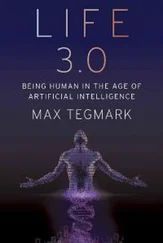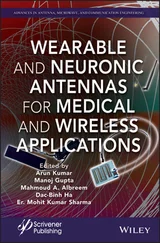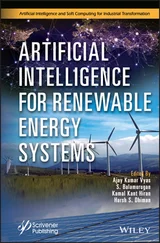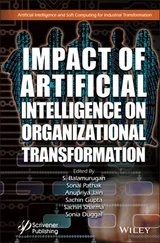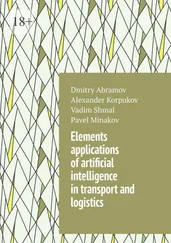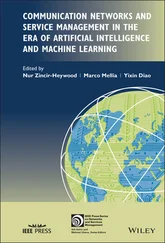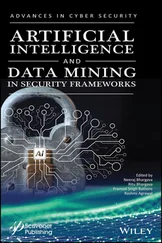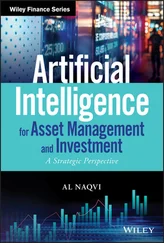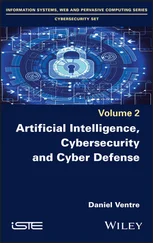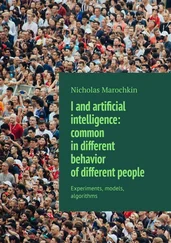3 Chapter 4 Figure 4.1 (a) Neural network (NN) as a classifier, (b) NN during the releva... Figure 4.2 Relevance propagation. Figure 4.3 Relevance propagation (heat map; relevance is presented by the in... Figure 4.4 Example of membership functions versus the traffic volume and net... Figure 4.5 A schematic representation of the Mamdani inference algorithm. Figure 4.6 Illustration of the soft margin for a linear support vector machi...
4 Chapter 5 Figure 5.1 Operation of GraphSAGE: (a) sample neighborhood, (b) aggregate fe... Figure 5.2 Illustrations of ConvGNN network: (a) A ConvGNN with multiple gra... Figure 5.3 2D Convolution versus graph convolution: (a) 2D convolution. Anal... Figure 5.4 Parametric graph convolution: (a) Conventional graph convolutiona... Figure 5.5 A ConvGNN with pooling and readout layers for graph classificatio... Figure 5.6 A graph autoencoder (GAE) for network embedding. The encoder uses... Figure 5.7 A STGNN for spatial‐temporal graph forecasting. A graph convoluti... Figure 5.8 A subset of the Web. Figure 5.9 Graph and the neighborhood of a node. The state x 1of node 1 depe... Figure 5.10 Graph (on the top, left), the corresponding encoding network (to... Figure 5.B.1 A directed graph and the corresponding matrices.
5 Chapter 6Figure 6.1 Routing game with two populations of players. Source: Krichene et...Figure 6.2 Examples of different types of stage games.Figure 6.3 In brackets: original version of Pigou’s network. no brackets: no...Figure 6.4 Braess’s paradox. (a) Initial network, (b) augmented network. The...Figure 6.5 (a) In atomic instances with affine cost functions, different equ...Figure 6.6 (Left) Example of embedding problems with zero‐cost cycles. Wavy ...
6 Chapter 7Figure 7.1 Algorithm for autonomous channel and power level selection.Figure 7.2 Major use cases of each self‐organizing network (SON) function....Figure 7.3 Transfer learning (TL)‐based network state information updating....Figure 7.4 Transition kernel: Markov decision process model of the system dy...Figure 7.5 Simulation scenario: network and traffic parameters.Figure 7.6 Time‐averaged parameters.Figure 7.7 Cell cluster example.Figure 7.8 Popularity profiles modeled as Markov chains. (a) Global populari...Figure 7.9 Performance of the algorithms.Figure 7.10 Datasets and the sources of data available to the network operat...Figure 7.11 Network function virtualization (NFV) service function chain.Figure 7.12 Graph neural network (GNN)‐based resource forecasting model for ...Figure 7.13 Service function chain (SFC) modeling: virtualized network funct...Figure 7.14 States and features from the virtualized network function compon...Figure 7.15 Virtualized network function 2 (VNF 2): Clearwater cloud IP mult...Figure 7.16 Network function virtualization (NFV) implementation used for ev...Figure 7.17 (a) Total forecasting error (t‐training iteration each involving...Figure 7.18 (a) Homer CPU utilization, (b) Homestead processing delay (t‐tes...Figure 7.19 (a) Percentage error on delay prediction, (b) percentage CPU for...Figure 7.20 (a) Effect on processing latency, (b) effect on calls dropped (t...Figure 7.21 Cumulative call drops (t‐test number).Figure 7.22 Results of change point detection for a nonstationary traffic se...Figure 7.23 Learned traffic parameters and predicted resource demands for da...Figure 7.24 Distribution of VNF packet processing delay for both the synthes...Figure 7.25 QoS performance comparison between resource demand prediction sc...Figure 7.26 Episodic average reward versus the episode number for the three ...Figure 7.27 (a) System model, (b) local control loop used to stabilize the u...Figure 7.28 Numerical experiments with different M under N = 100.Figure 7.29 Illustrative example of structural role proximity.Figure 7.30 Conceptual view of network representation learning (NRL).Figure 7.31 Taxonomy to summarize network representation learning (NRL) tech...Figure 7.32 Categorization of network structure.
7 Chapter 8Figure 8.1 The 2D representation of a qubit, when the amplitudes of its quan...Figure 8.2 The generic 3D representation of a qubit using a Bloch sphere, wh...Figure 8.3 Qubit represented by two electronic levels in an atom.Figure 8.4 Beam splitting of light.Figure 8.5 Wave and particle nature of light. (for more details see the colo...Figure 8.6 (a) Einstein–Podolsky–Rosen (EPR) paradox description using He at...Figure 8.7 Circuit representation of the Hadamard gate H, of the three Pauli...Figure 8.8 Quantum teleportation using entanglement.Figure 8.9 The five complex fifth roots of 1.Figure 8.10 QFT M/2and a Hadamard gate correspond to FFT M/2on the odd and e...Figure 8.11 QFT Mis reduced to QFT M/2and M additional gates.Figure 8.12 Quantum Fourier transform (QFT) iterations.Figure 8.13 General block diagram of QFT processor.
8 Chapter 9Figure 9.1 Geometrical picture of a noisy qubit quantum channel on the Bloch...Figure 9.2 The channel evolution phase.Figure 9.3 The general model of transmission of information over a noisy  c...Figure 9.4 Communication over a noisy
c...Figure 9.4 Communication over a noisy  channel.Figure 9.5 Detailed model of
channel.Figure 9.5 Detailed model of  channel: P purification state , X transmitter ...Figure 9.6 The formal model of a noisy quantum communication channel. The ou...Figure 9.7 Effects of the environment on the transmittable information and o...Figure 9.8 Transmission of classical information over quantum channel with p...Figure 9.9 Transmission of classical information over quantum channel with p...Figure 9.10 Transmission of classical information over quantum channel with ...Figure 9.11 Transmission of classical information over quantum channel with ...Figure 9.12 Model of private classical communication of a
channel: P purification state , X transmitter ...Figure 9.6 The formal model of a noisy quantum communication channel. The ou...Figure 9.7 Effects of the environment on the transmittable information and o...Figure 9.8 Transmission of classical information over quantum channel with p...Figure 9.9 Transmission of classical information over quantum channel with p...Figure 9.10 Transmission of classical information over quantum channel with ...Figure 9.11 Transmission of classical information over quantum channel with ...Figure 9.12 Model of private classical communication of a  channel.Figure 9.13 Entanglement‐assisted capacity of a
channel.Figure 9.13 Entanglement‐assisted capacity of a  channel.Figure 9.14 Quantum zero‐error communication system.Figure 9.15 Comparison of single (a) and joint (b) measurement settings. The...Figure 9.16 Confusability graph of a zero‐error code for one channel use. Th...Figure 9.17 Graph of a zero‐error code for two channel uses of a quantum cha...Figure 9.18 Hypergraph and the confusability graph of a given input system w...Figure 9.19 Steps of the entanglement‐assisted zero‐error quantum communicat...Figure 9.20 Hypergraph of an entanglement‐assisted zero‐error quantum code. ...Figure 9.21 Transmission of quantum information through the quantum channel....Figure 9.22 (a) Initially, the quantum system and the reference system are i...Figure 9.23 The conceptual meaning of quantum coherent information. The unit...Figure 9.24 Expression of quantum coherent information. The source entropy o...Figure 9.25 Polarization optics of the QKD transmitter and receiver.
channel.Figure 9.14 Quantum zero‐error communication system.Figure 9.15 Comparison of single (a) and joint (b) measurement settings. The...Figure 9.16 Confusability graph of a zero‐error code for one channel use. Th...Figure 9.17 Graph of a zero‐error code for two channel uses of a quantum cha...Figure 9.18 Hypergraph and the confusability graph of a given input system w...Figure 9.19 Steps of the entanglement‐assisted zero‐error quantum communicat...Figure 9.20 Hypergraph of an entanglement‐assisted zero‐error quantum code. ...Figure 9.21 Transmission of quantum information through the quantum channel....Figure 9.22 (a) Initially, the quantum system and the reference system are i...Figure 9.23 The conceptual meaning of quantum coherent information. The unit...Figure 9.24 Expression of quantum coherent information. The source entropy o...Figure 9.25 Polarization optics of the QKD transmitter and receiver.
9 Chapter 10Figure 10.1 Circuit diagram for the two‐qubit code.Figure 10.2 The circuit diagram of the three‐qubit code.Figure 10.3 Circuit illustrating the structure of an [[n, k, d]] stabilizer ...Figure 10.4 Circuit diagram for the four‐qubit code.Figure 10.5 The general procedure for active recovery in a quantum error cor...Figure 10.6 The surface code four cycle. (a) Graphical representation. (b) A...Figure 10.7 [50] (a) The [[5, 1, 2]] surface code formed by putting together...Figure 10.8 [50] A distance‐three surface code with parameters [13, 1, 3].Figure 10.9 (a),(b),(c) Rotating a distance 5 lattice to produce another dis...Figure 10.10 Notation for fault‐tolerant circuits.Figure 10.11 Simple example illustrating the principles of quantum error cor...Figure 10.12 Syndrome extraction operation for [[7, 1, 3]] CSS code.
Читать дальше

 c...Figure 9.4 Communication over a noisy
c...Figure 9.4 Communication over a noisy  channel.Figure 9.5 Detailed model of
channel.Figure 9.5 Detailed model of  channel: P purification state , X transmitter ...Figure 9.6 The formal model of a noisy quantum communication channel. The ou...Figure 9.7 Effects of the environment on the transmittable information and o...Figure 9.8 Transmission of classical information over quantum channel with p...Figure 9.9 Transmission of classical information over quantum channel with p...Figure 9.10 Transmission of classical information over quantum channel with ...Figure 9.11 Transmission of classical information over quantum channel with ...Figure 9.12 Model of private classical communication of a
channel: P purification state , X transmitter ...Figure 9.6 The formal model of a noisy quantum communication channel. The ou...Figure 9.7 Effects of the environment on the transmittable information and o...Figure 9.8 Transmission of classical information over quantum channel with p...Figure 9.9 Transmission of classical information over quantum channel with p...Figure 9.10 Transmission of classical information over quantum channel with ...Figure 9.11 Transmission of classical information over quantum channel with ...Figure 9.12 Model of private classical communication of a  channel.Figure 9.13 Entanglement‐assisted capacity of a
channel.Figure 9.13 Entanglement‐assisted capacity of a  channel.Figure 9.14 Quantum zero‐error communication system.Figure 9.15 Comparison of single (a) and joint (b) measurement settings. The...Figure 9.16 Confusability graph of a zero‐error code for one channel use. Th...Figure 9.17 Graph of a zero‐error code for two channel uses of a quantum cha...Figure 9.18 Hypergraph and the confusability graph of a given input system w...Figure 9.19 Steps of the entanglement‐assisted zero‐error quantum communicat...Figure 9.20 Hypergraph of an entanglement‐assisted zero‐error quantum code. ...Figure 9.21 Transmission of quantum information through the quantum channel....Figure 9.22 (a) Initially, the quantum system and the reference system are i...Figure 9.23 The conceptual meaning of quantum coherent information. The unit...Figure 9.24 Expression of quantum coherent information. The source entropy o...Figure 9.25 Polarization optics of the QKD transmitter and receiver.
channel.Figure 9.14 Quantum zero‐error communication system.Figure 9.15 Comparison of single (a) and joint (b) measurement settings. The...Figure 9.16 Confusability graph of a zero‐error code for one channel use. Th...Figure 9.17 Graph of a zero‐error code for two channel uses of a quantum cha...Figure 9.18 Hypergraph and the confusability graph of a given input system w...Figure 9.19 Steps of the entanglement‐assisted zero‐error quantum communicat...Figure 9.20 Hypergraph of an entanglement‐assisted zero‐error quantum code. ...Figure 9.21 Transmission of quantum information through the quantum channel....Figure 9.22 (a) Initially, the quantum system and the reference system are i...Figure 9.23 The conceptual meaning of quantum coherent information. The unit...Figure 9.24 Expression of quantum coherent information. The source entropy o...Figure 9.25 Polarization optics of the QKD transmitter and receiver.